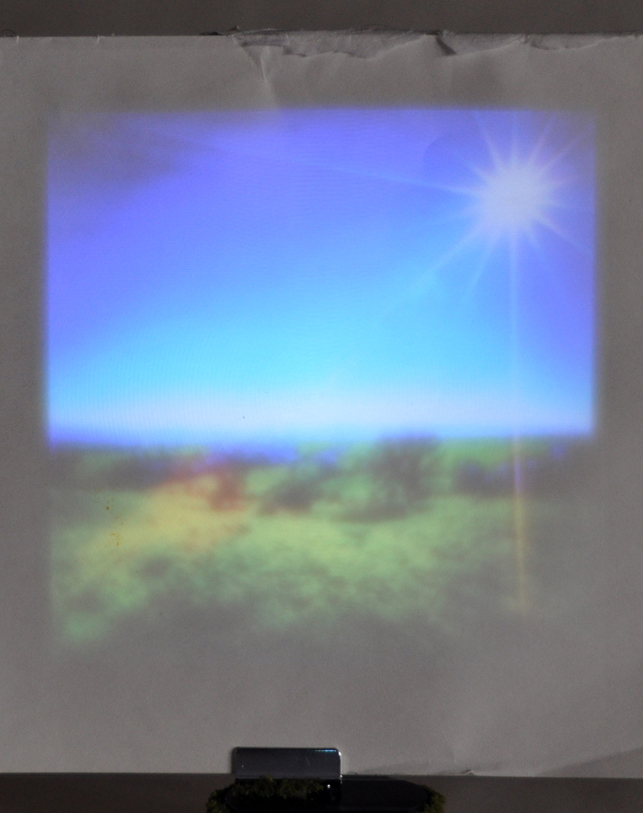A few months ago I sat down with my stepson Emmett to help him practice for a history class presentation on cultural artifacts from the Concord Museum’s Americana collection. He’d chosen Henry David Thoreau’s spyglass for its significance in Thoreau’s research on native species and climate change. Though the spyglass was an extravagant purchase for the naturalist and scholar, it gave Thoreau new insight into the natural world as observed from his cabin in Concord, MA and recorded in Walden (1854). Today, scientists use his daily environmental recordings in climate change modeling.
Little did I know that a seed had been planted that day.
Currently up through July 6 in “nostalgia” at FPAC Atlantic Wharf Gallery is my version of the spyglass, a loop of 40 landscapes that show no humans, no human artifacts, no roads, and no houses. A new instrument for recording nature is created when pirated landscape photos from Instagram coded #nature or #landscape are projected onto a pad of paper. Pictures tinged with instant-age effects, overly saturated colors, and vintage filters trigger a longing for a virgin landscape free of human intervention – a landscape that probably never existed and by Thoreau’s time was certainly already under pressure from human intervention and ignorance.
 details: (r) trophy stand, model turf, brass (r) projected imag
details: (r) trophy stand, model turf, brass (r) projected imag
 "Spyglass", 2013. Paper, glass, trophy stand, model turf, brass, mini LED projector, SDHC Card, and digital images sourced from Instagram.
"Spyglass", 2013. Paper, glass, trophy stand, model turf, brass, mini LED projector, SDHC Card, and digital images sourced from Instagram.